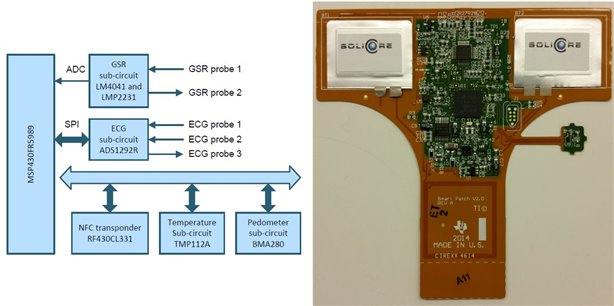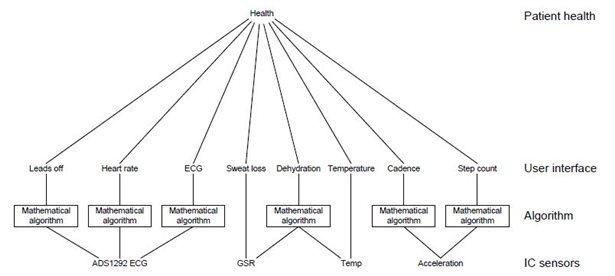SSZTBA6 may 2016 ADS1292 , LMP2231 , MSP430FR5989 , TMP112
Monitoring the basic functions of the human body can be useful to detect medical issues. Four vital signs are traditionally measured to keep track of these functions:
- Temperature
- Pulse
- Respiration
- Blood pressure
In many cases, these vital signs can be monitored using a microcontroller (MCU)-based system. While medical applications often require certification and the need to leverage specific algorithms to accurately monitor these vital signs, our new multi-parameter bio-signal monitor proof-of-concept shows how a system can use TI devices to measure three of the four primary vital signs described above. This ultra-low-power smart patch design can directly measure electrocardiogram (ECG), galvanic skin response (GSR) and skin temperature while also indirectly measuring other data such as step count or respiration rate.

This design demonstrates how a flexible substrate can be used with TI devices to adhere to skin to take the measurements. The patch will take in sensor data (ADS1292 ECG sub-circuit, LM4041 and LMP2231 GSR sub-circuit, TMP112 temperature sub-circuit and acceleration sensors) with algorithms running on the MSP430FR5989 microcontroller to derive health signs such as dehydration or ECG. It then leverages near field communication (NFC) as an interface from the patch to a smart phone (example app provided with design) to enable interface to the collected vitals.

To learn more about this TI Design reference design, download the design guide today!
Additional Resources
- Evaluate the MSP430FR5989 MCU today by downloading the datasheet
- Start developing with the MSP430FR5989 MCU LaunchPad™ development kit